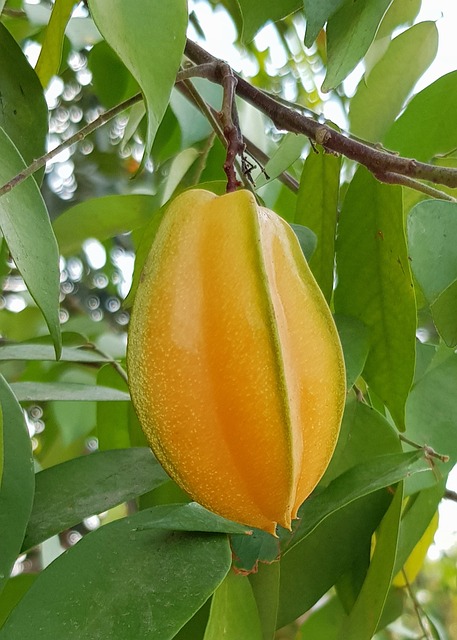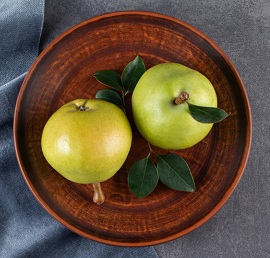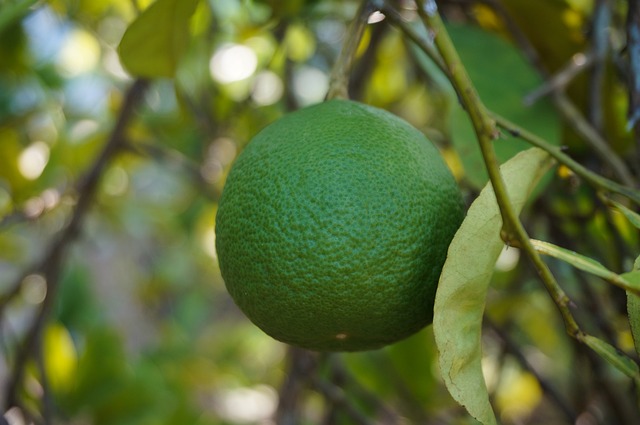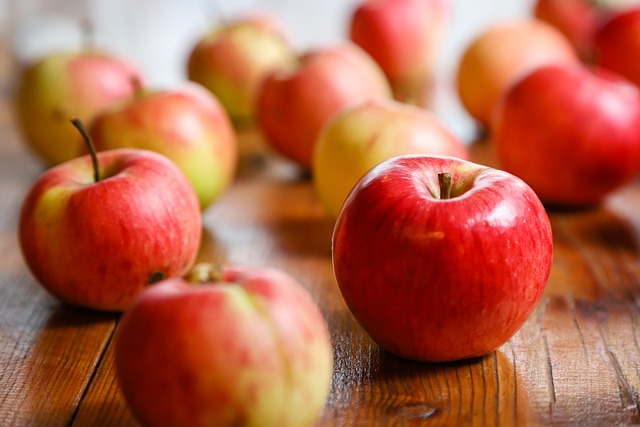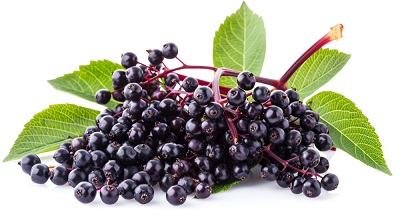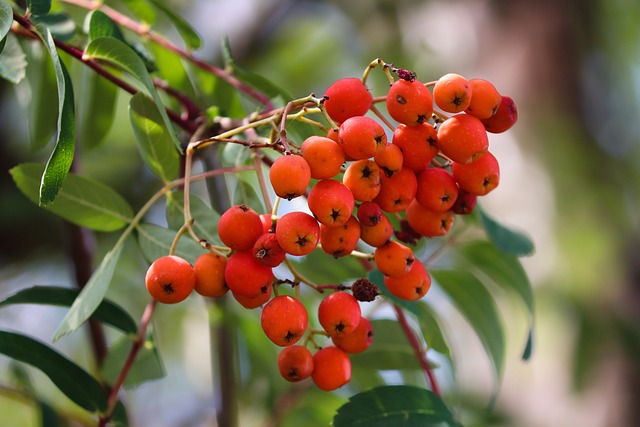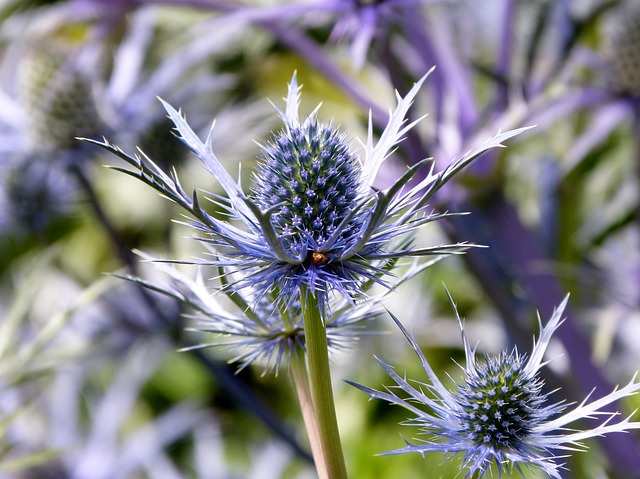Discover the sensational world of fruits that start with ‘S’ 50 vibrant varieties, each with its own story, flavor, and health secrets ready to surprise your taste buds and nourish your body.
Fruit Name Sapodilla Scientific Name Manilkara zapota Nutritional Value High in calories, carbohydrates, fiber, and contains vitamins C, A, and minerals like potassium, copper, and iron. Common Uses Eaten fresh, used in desserts, smoothies, and jams. Seasonality Typically available year-round in tropical climates. Health Benefits Supports digestion, boosts immunity, promotes bone health, and provides energy. Interesting Fact Sapodilla trees produce latex called chicle, once used in chewing gum production.
Fruit Name Soursop Scientific Name Annona muricata Nutritional Value Rich in fiber, vitamins C, B1, B2, and contains potassium, magnesium, and iron. Common Uses Consumed fresh, used in beverages, ice cream, and desserts. Seasonality Available year-round in tropical regions. Health Benefits Known for its potential anti-cancer properties, boosts immunity, supports digestive health, and may reduce inflammation. Interesting Fact Soursop leaves are used in traditional medicine to treat various ailments.
Fruit Name Starfruit (Carambola) Scientific Name Averrhoa carambola Nutritional Value Low in calories, rich in fiber, vitamin C, and antioxidants. Contains small amounts of potassium, magnesium, and phosphorus. Common Uses Eaten fresh, used in salads, beverages, and as a garnish. Seasonality Mainly available from late summer to mid-winter. Health Benefits Supports heart health, boosts immunity, improves digestion, and helps regulate blood sugar levels. Interesting Fact The starfruit gets its name from its star-shaped cross-section.
Fruit Name Strawberry Scientific Name Fragaria × ananassa Nutritional Value High in vitamin C, manganese, fiber, and antioxidants. Contains folate and potassium. Common Uses Consumed fresh, used in desserts, jams, jellies, and smoothies. Seasonality Typically available in late spring and summer. Health Benefits Boosts immunity, improves heart health, helps regulate blood sugar levels, and supports skin health. Interesting Fact Strawberries are the only fruit with seeds on the outside, with an average of 200 seeds per berry.
Fruit Name Sugar Apple (Sweetsop) Scientific Name Annona squamosa Nutritional Value Rich in fiber, vitamins C, B6, and contains potassium, magnesium, and iron. Common Uses Eaten fresh or used in desserts and beverages. Seasonality Typically available from late summer to early winter. Health Benefits Promotes digestive health, boosts immunity, supports brain health, and has anti-inflammatory properties. Interesting Fact The sugar apple is related to the soursop and has a similar texture but a sweeter taste.
Fruit Name Salak (Snake Fruit) Scientific Name Salacca zalacca Nutritional Value High in fiber, vitamin C, and contains calcium, iron, and potassium. Common Uses Eaten fresh, used in salads, preserves, and snacks. Seasonality Available year-round in Southeast Asia. Health Benefits Aids in digestion, boosts immunity, promotes eye health, and supports weight management. Interesting Fact Salak is called “snake fruit” because of its reddish-brown scaly skin.
Fruit Name Sapote (White Sapote) Scientific Name Casimiroa edulis Nutritional Value Rich in fiber, vitamins C, A, and contains potassium, calcium, and phosphorus. Common Uses Consumed fresh or used in desserts and beverages. Seasonality Typically available from late summer to early winter. Health Benefits Supports digestive health, boosts immunity, helps maintain healthy skin, and promotes heart health. Interesting Fact The white sapote is often referred to as the “sleeping sapote” due to its potential sedative effects.
Fruit Name Sea Buckthorn Scientific Name Hippophae rhamnoides Nutritional Value Rich in vitamins C, E, K, and contains omega-3, 6, 7, and 9 fatty acids. Also high in fiber and antioxidants. Common Uses Used in juices, jams, oils, and supplements. Seasonality Typically available from late summer to early winter. Health Benefits Supports skin health, boosts immunity, promotes heart health, and has anti-inflammatory properties. Interesting Fact Sea buckthorn is known for its high vitamin C content, with levels up to 10 times that of oranges.
Fruit Name Safou (African Pear) Scientific Name Dacryodes edulis Nutritional Value High in fats, fiber, protein, and contains vitamins C, A, and minerals like potassium and calcium. Common Uses Eaten fresh, roasted, or used in cooking and oils. Seasonality Typically available from May to September in tropical regions. Health Benefits Supports heart health, provides energy, promotes healthy skin, and supports bone health. Interesting Fact Safou is often referred to as the “butterfruit” due to its creamy texture.
Image source: https://www.appropedia.org/Safou
Fruit Name Santol Scientific Name Sandoricum koetjape Nutritional Value Rich in fiber, vitamins C, B, and contains calcium, iron, and phosphorus. Common Uses Eaten fresh, used in preserves, and as a flavoring in dishes. Seasonality Typically available from June to October. Health Benefits Supports digestive health, boosts immunity, provides antioxidants, and helps regulate blood sugar levels. Interesting Fact The santol fruit is known for its thick, white pulp that surrounds the seeds, which is often eaten fresh or made into candies.
Fruit Name Surinam Cherry Scientific Name Eugenia uniflora Nutritional Value Rich in vitamins C, A, and contains fiber, potassium, and antioxidants. Common Uses Eaten fresh, used in jellies, jams, and beverages. Seasonality Typically available from late spring to early fall. Health Benefits Supports immune function, promotes skin health, aids digestion, and provides antioxidants. Interesting Fact The Surinam cherry is known for its ribbed, pumpkin-like appearance.
Fruit Name Shonan Gold Scientific Name Citrus reticulata x C. sinensis Nutritional Value High in vitamin C, fiber, and contains antioxidants. Common Uses Eaten fresh, used in desserts and salads. Seasonality Typically available in winter and early spring. Health Benefits Boosts immune system, promotes skin health, supports heart health, and provides antioxidants. Interesting Fact Shonan Gold is a hybrid citrus fruit developed in Japan, known for its bright yellow color and sweet flavor.
Fruit Name Sweet Lemon (Mosambi) Scientific Name Citrus limetta Nutritional Value Rich in vitamin C, low in calories, and contains fiber, potassium, and antioxidants. Common Uses Eaten fresh, used in juices, salads, and desserts. Seasonality Typically available year-round in tropical and subtropical regions. Health Benefits Boosts immunity, aids digestion, promotes hydration, and helps in detoxification. Interesting Fact Despite its name, sweet lemon is less acidic and has a sweeter taste compared to regular lemons.
Fruit Name Snowberry Scientific Name Symphoricarpos albus Nutritional Value Contains fiber and antioxidants, but is not commonly consumed by humans due to its bitter taste. Common Uses Primarily used in traditional medicine and as ornamental plants. Seasonality Typically available in late summer to early fall. Health Benefits Traditionally believed to have medicinal properties for treating skin conditions and digestive issues. Interesting Fact Snowberries are named for their white, waxy berries that persist on the plant through winter.
Fruit Name Sugarcane Scientific Name Saccharum officinarum Nutritional Value High in sugar content, provides carbohydrates, fiber, and contains small amounts of minerals like calcium, potassium, and magnesium. Common Uses Used to produce sugar, molasses, and rum. Also consumed as juice. Seasonality Typically harvested in tropical regions from late summer to early winter. Health Benefits Provides instant energy, aids digestion, promotes hydration, and may support liver health. Interesting Fact Sugarcane is one of the oldest crops cultivated for its juice, which is the primary source of table sugar globally.
Fruit Name Sweet Orange Scientific Name Citrus sinensis Nutritional Value Rich in vitamin C, fiber, folate, and antioxidants. Contains small amounts of potassium, calcium, and magnesium. Common Uses Eaten fresh, used in juices, desserts, and salads. Seasonality Typically available year-round, with peak season in winter. Health Benefits Boosts immunity, promotes heart health, supports skin health, and helps in digestion. Interesting Fact Sweet oranges are the most cultivated fruit tree in the world, and their juice is a staple in many households.
Fruit Name Salal Berry Scientific Name Gaultheria shallon Nutritional Value Rich in fiber, vitamins C, K, and contains antioxidants. Common Uses Eaten fresh, used in jams, jellies, and desserts. Seasonality Typically available in late summer to early fall. Health Benefits Supports digestive health, boosts immunity, promotes heart health, and provides antioxidants. Interesting Fact Salal berries are native to the Pacific Northwest and were traditionally used by Native American tribes for food and medicine.
Fruit Name Saskatoon Berry Scientific Name Amelanchier alnifolia Nutritional Value High in fiber, vitamins C, K, and contains manganese, magnesium, and antioxidants. Common Uses Eaten fresh, used in pies, jams, jellies, and wines. Seasonality Typically available in mid to late summer. Health Benefits Promotes heart health, supports bone health, boosts immunity, and provides antioxidants. Interesting Fact Saskatoon berries are often compared to blueberries but have a unique nutty flavor.
Fruit Name Sycamore Fig Scientific Name Ficus sycomorus Nutritional Value Rich in fiber, vitamins A, K, and contains calcium, potassium, and magnesium. Common Uses Eaten fresh or dried, used in preserves and desserts. Seasonality Typically available in late summer to early fall. Health Benefits Supports digestive health, promotes bone health, boosts immunity, and helps regulate blood sugar levels. Interesting Fact The sycamore fig is native to Africa and has been cultivated since ancient times, with mentions in the Bible and Egyptian texts.
Fruit Name Sweet Cherry Scientific Name Prunus avium Nutritional Value High in fiber, vitamins C, A, and contains potassium, antioxidants, and melatonin. Common Uses Eaten fresh, used in desserts, jams, jellies, and beverages. Seasonality Typically available in late spring to mid-summer. Health Benefits Supports heart health, promotes sleep, reduces inflammation, and boosts immunity. Interesting Fact Sweet cherries are one of the few natural sources of melatonin, which helps regulate sleep.
Fruit Name Sweet Lime Scientific Name Citrus limetta Nutritional Value High in vitamin C, low in calories, and contains fiber, potassium, and antioxidants. Common Uses Eaten fresh, used in juices, salads, and desserts. Seasonality Typically available year-round in tropical and subtropical regions. Health Benefits Boosts immunity, aids digestion, promotes hydration, and helps in detoxification. Interesting Fact Despite its name, sweet lime is less acidic and has a sweeter taste compared to regular lemons.
Fruit Name Sharlyn Melon Scientific Name Cucumis melo Nutritional Value High in water content, vitamins A, C, and contains potassium, and fiber. Common Uses Eaten fresh, used in salads, and desserts. Seasonality Typically available in late summer to early fall. Health Benefits Supports hydration, boosts immunity, promotes skin health, and aids digestion. Interesting Fact Sharlyn melon is a hybrid of cantaloupe and honeydew, known for its unique flavor and fragrant aroma.
Fruit Name Shaggy Bark Apple Scientific Name Diospyros texana Nutritional Value Contains fiber, vitamins C, A, and small amounts of potassium and calcium. Common Uses Eaten fresh or used in preserves and desserts. Seasonality Typically available in late summer to early fall. Health Benefits Supports digestive health, boosts immunity, promotes heart health, and provides antioxidants. Interesting Fact The shaggy bark apple is native to Texas and is also known as the “Texas persimmon.”
Fruit Name Spanish Lime Scientific Name Melicoccus bijugatus Nutritional Value Rich in fiber, vitamins A, C, and contains calcium, phosphorus, and iron. Common Uses Eaten fresh, used in beverages and preserves. Seasonality Typically available in summer. Health Benefits Supports digestive health, boosts immunity, promotes eye health, and provides energy. Interesting Fact Spanish lime is also known as “quenepa” or “mamoncillo” in different regions.
Fruit Name Snow Apple (White Star Apple) Scientific Name Chrysophyllum albidum Nutritional Value High in fiber, vitamins C, A, and contains calcium, iron, and potassium. Common Uses Eaten fresh or used in desserts and beverages. Seasonality Typically available in late winter to early spring. Health Benefits Supports digestive health, boosts immunity, promotes healthy skin, and provides antioxidants. Interesting Fact Snow apple is also known as the “white star apple” and is native to tropical Africa.
Fruit Name Strawberry Guava Scientific Name Psidium cattleyanum Nutritional Value Rich in vitamins C, A, and contains fiber, potassium, and antioxidants. Common Uses Eaten fresh, used in jams, jellies, and beverages. Seasonality Typically available year-round in tropical regions. Health Benefits Supports immune function, promotes skin health, aids digestion, and provides antioxidants. Interesting Fact Strawberry guava is considered an invasive species in some regions due to its rapid growth and spread.
Fruit Name Sunberry (Wonderberry) Scientific Name Solanum retroflexum Nutritional Value Contains vitamins C, A, and small amounts of potassium and fiber. Common Uses Eaten fresh or used in jams, jellies, and desserts. Seasonality Typically available in late summer to early fall. Health Benefits Supports immune function, promotes eye health, provides antioxidants, and aids digestion. Interesting Fact Sunberries are related to tomatoes and eggplants and are sometimes referred to as “garden huckleberries.”
Fruit Name Sweet Pepper (Bell Pepper) Scientific Name Capsicum annuum Nutritional Value High in vitamins C, A, B6, and contains potassium, fiber, and antioxidants. Common Uses Eaten fresh, used in salads, stir-fries, and stuffed dishes. Seasonality Typically available year-round. Health Benefits Supports immune function, promotes eye health, aids digestion, and provides antioxidants. Interesting Fact Bell peppers come in various colors, including green, red, yellow, and orange, each with a slightly different flavor and nutritional profile.
Fruit Name Sunquat Scientific Name Fortunella margarita x C. japonica Nutritional Value High in vitamin C, fiber, and contains antioxidants. Common Uses Eaten fresh or used in jams, jellies, and beverages. Seasonality Typically available in late winter to early spring. Health Benefits Boosts immunity, promotes skin health, supports heart health, and provides antioxidants. Interesting Fact Sunquat is a hybrid of kumquat and calamondin, known for its sweet and tangy flavor.
Fruit Name Snow Peach Scientific Name Prunus persica var. nucipersica Nutritional Value Rich in vitamins A, C, and contains potassium, fiber, and antioxidants. Common Uses Eaten fresh, used in desserts, jams, and jellies. Seasonality Typically available in late summer. Health Benefits Supports immune function, promotes skin health, aids digestion, and provides antioxidants. Interesting Fact Snow peaches are a variety of peach with a pale, almost white flesh and a delicate flavor.
Fruit Name Seckel Pear Scientific Name Pyrus communis Nutritional Value High in fiber, vitamins C, K, and contains potassium and antioxidants. Common Uses Eaten fresh, used in desserts, salads, and preserves. Seasonality Typically available in fall. Health Benefits Supports digestive health, boosts immunity, promotes heart health, and provides antioxidants. Interesting Fact Seckel pears are the smallest variety of pears, often referred to as “sugar pears” due to their sweet flavor.
Fruit Name Sloe Berry Scientific Name Prunus spinosa Nutritional Value Contains fiber, vitamins C, E, and small amounts of antioxidants. Common Uses Used in jams, jellies, and for making sloe gin. Seasonality Typically available in late summer to early winter. Health Benefits Supports immune function, provides antioxidants, promotes heart health, and aids digestion. Interesting Fact Sloe berries are the fruit of the blackthorn bush and are commonly used to make sloe gin, a popular British liqueur.
Fruit Name Shaddock (Pomelo) Scientific Name Citrus maxima Nutritional Value Rich in vitamins C, A, and contains fiber, potassium, and antioxidants. Common Uses Eaten fresh, used in salads, juices, and desserts. Seasonality Typically available in late fall to early spring. Health Benefits Boosts immunity, promotes heart health, supports digestion, and provides antioxidants. Interesting Fact Pomelo is the largest citrus fruit, often weighing up to 2 kilograms (4.4 lbs).
Fruit Name Star Gooseberry Scientific Name Phyllanthus acidus Nutritional Value Contains vitamins C, A, and small amounts of potassium and fiber. Common Uses Used in preserves, pickles, and sauces. Seasonality Typically available year-round in tropical regions. Health Benefits Supports immune function, aids digestion, promotes heart health, and provides antioxidants. Interesting Fact Despite its name, star gooseberry is not related to the true gooseberry but gets its name from the star-like shape of its fruit.
Fruit Name Sorb Apple Scientific Name Sorbus domestica Nutritional Value Rich in fiber, vitamins C, K, and contains potassium and antioxidants. Common Uses Eaten fresh, used in preserves, and for making cider. Seasonality Typically available in late summer to early fall. Health Benefits Supports digestive health, boosts immunity, promotes heart health, and provides antioxidants. Interesting Fact The sorb apple is a rare fruit tree native to southern Europe, known for its astringent fruit that becomes sweeter after bletting (a process of softening by overripening).
Fruit Name Suncrest Peach Scientific Name Prunus persica Nutritional Value High in vitamins A, C, and contains potassium, fiber, and antioxidants. Common Uses Eaten fresh, used in desserts, jams, and jellies. Seasonality Typically available in late summer. Health Benefits Supports immune function, promotes skin health, aids digestion, and provides antioxidants. Interesting Fact Suncrest peaches are known for their bright red skin and juicy, sweet flavor.
Fruit Name Satsuma Scientific Name Citrus unshiu Nutritional Value High in vitamin C, fiber, and contains antioxidants. Common Uses Eaten fresh, used in salads, desserts, and juices. Seasonality Typically available in winter. Health Benefits Boosts immunity, promotes heart health, supports skin health, and provides antioxidants. Interesting Fact Satsumas are a type of mandarin orange that are seedless and easy to peel.
Fruit Name Scarlet Guava Scientific Name Psidium guajava Nutritional Value Rich in vitamins C, A, and contains fiber, potassium, and antioxidants. Common Uses Eaten fresh, used in jams, jellies, and beverages. Seasonality Typically available year-round in tropical regions. Health Benefits Supports immune function, promotes skin health, aids digestion, and provides antioxidants. Interesting Fact Scarlet guava is known for its bright red skin and sweet, fragrant flavor.
Fruit Name Sweet Persimmon (Fuyu Persimmon) Scientific Name Diospyros kaki Nutritional Value High in fiber, vitamins A, C, and contains potassium, antioxidants, and manganese. Common Uses Eaten fresh, used in salads, desserts, and dried snacks. Seasonality Typically available in late fall to early winter. Health Benefits Supports digestive health, boosts immunity, promotes heart health, and provides antioxidants. Interesting Fact Fuyu persimmons can be eaten while still firm, unlike other persimmons that need to ripen fully to reduce astringency.
Fruit Name Spanish Cherry (Mimusops) Scientific Name Mimusops elengi Nutritional Value Contains vitamins A, C, and small amounts of calcium, iron, and fiber. Common Uses Eaten fresh, used in traditional medicine, and as a flavoring in dishes. Seasonality Typically available in late spring to early summer. Health Benefits Supports immune function, promotes skin health, aids digestion, and provides antioxidants. Interesting Fact Spanish cherry is not a true cherry but gets its name from the cherry-like appearance of its fruit.
Fruit Name Strawberry Pear (Pitaya) Scientific Name Hylocereus undatus Nutritional Value High in fiber, vitamins C, B, and contains iron, magnesium, and antioxidants. Common Uses Eaten fresh, used in smoothies, salads, and desserts. Seasonality Typically available year-round in tropical regions. Health Benefits Supports immune function, promotes heart health, aids digestion, and provides antioxidants. Interesting Fact Strawberry pear, also known as dragon fruit, is known for its vibrant pink skin and speckled flesh.
Fruit Name Sweet Tamarind Scientific Name Tamarindus indica Nutritional Value High in carbohydrates, fiber, vitamins C, B, and contains calcium, magnesium, and potassium. Common Uses Eaten fresh or used in sauces, beverages, and desserts. Seasonality Typically available in late fall to early spring. Health Benefits Supports digestive health, boosts immunity, promotes heart health, and provides antioxidants. Interesting Fact Sweet tamarind is often used to make tamarind paste, a popular ingredient in Asian and Latin American cuisines.
Fruit Name Soursop Scientific Name Annona muricata Nutritional Value Rich in fiber, vitamins C, B, and contains potassium, magnesium, and antioxidants. Common Uses Eaten fresh, used in smoothies, juices, and desserts. Seasonality Typically available year-round in tropical regions. Health Benefits Supports immune function, promotes heart health, aids digestion, and provides antioxidants. Interesting Fact Soursop is known for its spiky green skin and creamy, sweet-sour flesh, often used in beverages and desserts.
Fruit Name Serviceberry (Juneberry) Scientific Name Amelanchier canadensis Nutritional Value High in fiber, vitamins C, K, and contains manganese, magnesium, and antioxidants. Common Uses Eaten fresh, used in pies, jams, jellies, and wines. Seasonality Typically available in early summer. Health Benefits Promotes heart health, supports bone health, boosts immunity, and provides antioxidants. Interesting Fact Serviceberries are often compared to blueberries but have a unique almond-like flavor.
Fruit Name Sorrel Scientific Name Rumex acetosa Nutritional Value High in vitamins A, C, and contains calcium, iron, and antioxidants. Common Uses Used in salads, soups, sauces, and beverages. Seasonality Typically available in spring and early summer. Health Benefits Supports immune function, promotes digestive health, provides antioxidants, and aids in detoxification. Interesting Fact Sorrel has a tangy, lemon-like flavor and is often used as a herb in cooking rather than a fruit.
Fruit Name Satinash Scientific Name Syzygium fibrosum Nutritional Value Contains vitamins C, A, and small amounts of calcium, iron, and fiber. Common Uses Eaten fresh or used in preserves and beverages. Seasonality Typically available year-round in tropical regions. Health Benefits Supports immune function, promotes skin health, aids digestion, and provides antioxidants. Interesting Fact Satinash is a type of water apple with a fibrous texture and mildly sweet flavor.
Fruit Name Shikuwasa Scientific Name Citrus depressa Nutritional Value High in vitamin C, fiber, and contains antioxidants. Common Uses Used in beverages, sauces, and as a flavoring in dishes. Seasonality Typically available in late summer to early winter. Health Benefits Boosts immunity, promotes skin health, supports digestion, and provides antioxidants. Interesting Fact Shikuwasa is a sour citrus fruit native to Okinawa, Japan, often used in juices and sauces.
Fruit Name Shagbark Hickory Nut Scientific Name Carya ovata Nutritional Value High in fats, protein, fiber, and contains vitamins B, E, and minerals like calcium and magnesium. Common Uses Eaten fresh or used in baking and cooking. Seasonality Typically available in fall. Health Benefits Supports heart health, promotes bone health, provides energy, and aids digestion. Interesting Fact Shagbark hickory nuts are known for their sweet, buttery flavor and are often used in traditional Native American cuisine.
Fruit Name Scarlet Runner Bean Scientific Name Phaseolus coccineus Nutritional Value High in protein, fiber, vitamins C, A, and contains iron, potassium, and antioxidants. Common Uses Eaten fresh or used in soups, stews, and salads. Seasonality Typically available in late summer to early fall. Health Benefits Supports heart health, promotes digestive health, provides protein, and aids in muscle growth. Interesting Fact Scarlet runner beans are known for their vibrant red flowers and are often grown as ornamental plants as well as for their edible beans.
Fruit Name Strawberry Tomato (Cape Gooseberry) Scientific Name Physalis peruviana Nutritional Value High in vitamins C, A, and contains fiber, potassium, and antioxidants. Common Uses Eaten fresh, used in desserts, jams, and sauces. Seasonality Typically available in late summer to early fall. Health Benefits Supports immune function, promotes heart health, aids digestion, and provides antioxidants. Interesting Fact Strawberry tomatoes are also known as Cape gooseberries and are enclosed in a papery husk, resembling small tomatoes.
Fruit Name Silverberry Scientific Name Elaeagnus commutata Nutritional Value Contains vitamins A, C, and small amounts of fiber, antioxidants, and minerals. Common Uses Eaten fresh or used in preserves and beverages. Seasonality Typically available in late summer to early fall. Health Benefits Supports immune function, promotes skin health, provides antioxidants, and aids digestion. Interesting Fact Silverberries have a unique silvery sheen on their skin and are often used in landscaping as well as for their edible fruit.
Fruit Name Sweet Prickly Pear Scientific Name Opuntia ficus-indica Nutritional Value High in fiber, vitamins C, B, and contains magnesium, potassium, and antioxidants. Common Uses Eaten fresh, used in jams, jellies, and beverages. Seasonality Typically available in late summer to early fall. Health Benefits Supports immune function, promotes heart health, aids digestion, and provides antioxidants. Interesting Fact Sweet prickly pears are cactus fruits known for their sweet, juicy flesh and are often used in Mexican cuisine.
Fruit Name Sea Grape Scientific Name Coccoloba uvifera Nutritional Value Contains vitamins C, A, and small amounts of calcium, iron, and fiber. Common Uses Eaten fresh, used in preserves, and beverages. Seasonality Typically available in late summer to early fall. Health Benefits Supports immune function, promotes skin health, provides antioxidants, and aids digestion. Interesting Fact Sea grapes grow in clusters like grapes but are actually drupes, and are often found on coastal beaches in tropical regions.
Fruit Name Sweet Calabash Scientific Name Passiflora maliformis Nutritional Value High in fiber, vitamins A, C, and contains calcium, iron, and antioxidants. Common Uses Eaten fresh or used in beverages and desserts. Seasonality Typically available in late summer to early fall. Health Benefits Supports immune function, promotes heart health, aids digestion, and provides antioxidants. Interesting Fact Sweet calabash is a type of passion fruit known for its hard shell and sweet, aromatic pulp.
Fruit Name Sweet Olive Scientific Name Osmanthus fragrans Nutritional Value Limited nutritional value; primarily used for its aromatic flowers. Common Uses Used in teas, perfumes, and traditional Chinese medicine. Seasonality Typically blooms in late summer to early fall. Health Benefits Promotes relaxation, supports skin health, and provides antioxidants. Interesting Fact Sweet olive, also known as sweet osmanthus, is valued more for its fragrant flowers than its fruit.
Fruit Name Spanish Chestnut Scientific Name Castanea sativa Nutritional Value High in carbohydrates, fiber, vitamins C, B, and contains potassium, iron, and antioxidants. Common Uses Eaten roasted or used in desserts and savory dishes. Seasonality Typically available in late fall to early winter. Health Benefits Supports heart health, promotes digestive health, provides energy, and aids in muscle growth. Interesting Fact Spanish chestnuts are often roasted and sold as a popular street food during the winter holidays in many countries.
Fruit Name Sea Holly Scientific Name Eryngium maritimum Nutritional Value Limited nutritional value; primarily used as an ornamental plant. Common Uses Used more for ornamental purposes than as an edible fruit. Seasonality Typically blooms in summer. Health Benefits Limited nutritional information as it is not widely consumed. Interesting Fact Sea holly is a spiny coastal plant with striking blue flowers, often used in floral arrangements.
Fruit Name Spondias Dulcis (Ambarella) Scientific Name Spondias dulcis Nutritional Value High in vitamin C, fiber, and contains small amounts of vitamins A, calcium, and iron. Common Uses Eaten fresh, used in juices, salads, and pickles. Seasonality Typically available year-round in tropical regions. Health Benefits Supports immune function, promotes skin health, aids digestion, and provides antioxidants. Interesting Fact Ambarella, also known as golden apple or June plum, is a tropical fruit with a tart flavor and crunchy texture.
Fruit Name Squashberry Scientific Name Viburnum edule Nutritional Value Contains vitamins C, A, and small amounts of fiber and antioxidants. Common Uses Used in jams, jellies, and sauces. Seasonality Typically available in late summer to early fall. Health Benefits Supports immune function, promotes heart health, provides antioxidants, and aids digestion. Interesting Fact Squashberries are small red berries that grow in clusters and are often used by indigenous peoples in North America for food and medicine.
Fruit Name Sago Palm Scientific Name Cycas revoluta Nutritional Value Contains starch, small amounts of vitamins and minerals. Common Uses Starch extracted from the trunk is used to make sago pearls and flour. Seasonality Typically available year-round. Health Benefits Provides a source of carbohydrates, supports energy production, and aids digestion. Interesting Fact The sago palm is not a true palm but a type of cycad, and its starch is used in traditional dishes across Southeast Asia.
Fruit Name Star Anise Scientific Name Illicium verum Nutritional Value Contains small amounts of fiber, vitamins C, A, and antioxidants. Common Uses Used as a spice in cooking, particularly in Asian cuisine and baking. Seasonality Typically available year-round. Health Benefits Supports digestion, provides antioxidants, promotes respiratory health, and aids in flavoring dishes. Interesting Fact Star anise is a star-shaped spice known for its licorice-like flavor and is often used in traditional Chinese and Indian dishes.
Visited 4 times, 1 visit(s) today


